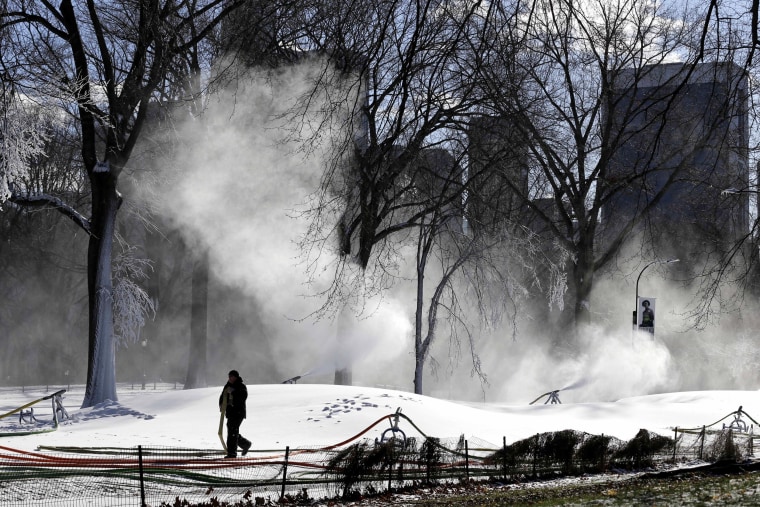The East Coast has gotten much less snow than it usually does by this time of year. That's about to change.
A storm brewing right now is forecast to dump between 1 and 2 feet of snow on the Northeast this weekend, in a winter wallop sure to shock many cities that have received well below-average snowfall so far this season.
Related: Storm Could Dump 2 Feet of Snow on East Coast: Forecasters
Here's a look at how far behind select cities are in terms of snowfall this winter as of Jan. 18, according to The Weather Channel:
- Albany, New York, has received just 4.4 inches of snow so far this season, which is 23 inches below average.
- Burlington, Vermont, has received 16.2 inches of snow so far, which is more than 19 inches below average.
- Boston has received 4.4 inches of snow so far, which is more than 13.5 inches below average.
- Pittsburgh has received 7.2 inches of snow so far, which is 10 inches below average.
- Philadelphia has received 0.5 inches of snow, which is about 6.5 inches below average.
- New York City just got its first measurable snow of 0.4 inches this past Sunday, which puts it at just under 9 inches below average so far for the season. That's the sixth latest first measurable snow, meaning at least 0.1 inches of snow, there.
- Washington, D.C., also just got their first measurable snow of 0.3 inches on Sunday, which is just over 5 inches below average season-to-date.

Those numbers are likely to change after this weekend. The upcoming storm could produce a "prolific" amount of snow, affecting millions across the eastern part of the U.S., The Weather Channel said.
